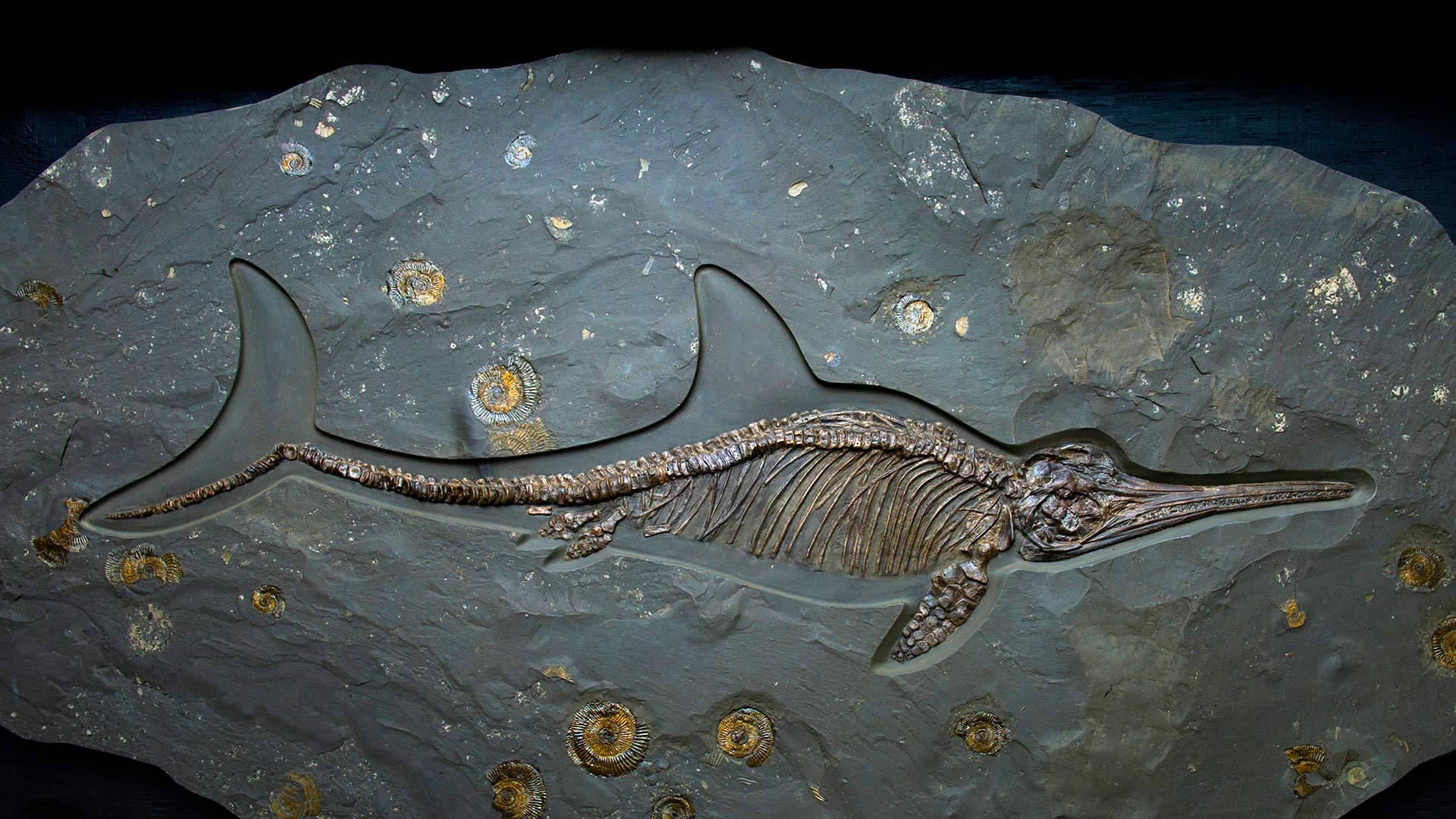侏罗纪时期的鱼龙化石,英国多塞特 An ichthyosaur fossil of the Jurassic period, Dinosaurland Fossil Museum, Lyme Regis, Dorset, England (© Christopher Jones/Alamy)

侏罗纪时期的鱼龙化石,英国多塞特 An ichthyosaur fossil of the Jurassic period, Dinosaurland Fossil Museum, Lyme Regis, Dorset, England (© Christopher Jones/Alamy)
Celebrating a young girl's age-old discovery
When 12-year-old Mary Anning uncovered the complete skeleton of a fish-like creature near her home on England's southern coast in 1811, extinction was a shaky idea in science. Fossils were nothing new—everything dies and leaves remains, after all. But could an entire species really die off? Were more of these 17-foot sea monsters lurking in the depths of the English Channel?
The fact that ichthyosaurs like this went extinct 90 million years ago seems obvious today (which, by the way, is National Fossil Day). But though such definite answers were still only suspicions during Mary Anning's lifetime, she persisted with paleontology. Her prolific fossil finds fueled both public interest and scientific understanding, and she even discovered two more species in her 20s: the pterodactyl and the plesiosaur. Though she died young at 47, largely denied recognition as a woman in Victorian society, her influence endures like the fossils that fascinated her.
庆祝一个年轻女孩的古老发现
1811年,当12岁的玛丽·安宁(Mary Anning)在她位于英格兰南部海岸的家附近发现了一具鱼形生物的完整骨架时,灭绝在科学上是一个不可靠的想法。化石并不是什么新鲜事,毕竟,一切都会死去,树叶也会留下。但整个物种真的会灭绝吗?这些17英尺高的海怪中有更多潜伏在英吉利海峡深处吗?
像这样的鱼龙在9000万年前灭绝的事实在今天看来是显而易见的(顺便说一句,这是国家化石日)。但尽管在玛丽·安宁的一生中,这些明确的答案仍然只是怀疑,但她坚持使用古生物学。她丰富的化石发现激发了公众兴趣和科学理解,她甚至在20多岁的时候又发现了两个物种:翼手龙和蛇颈龙。尽管她英年早逝,享年47岁,在维多利亚时代基本上被否认是一名女性,但她的影响就像让她着迷的化石一样持久。
评论已关闭